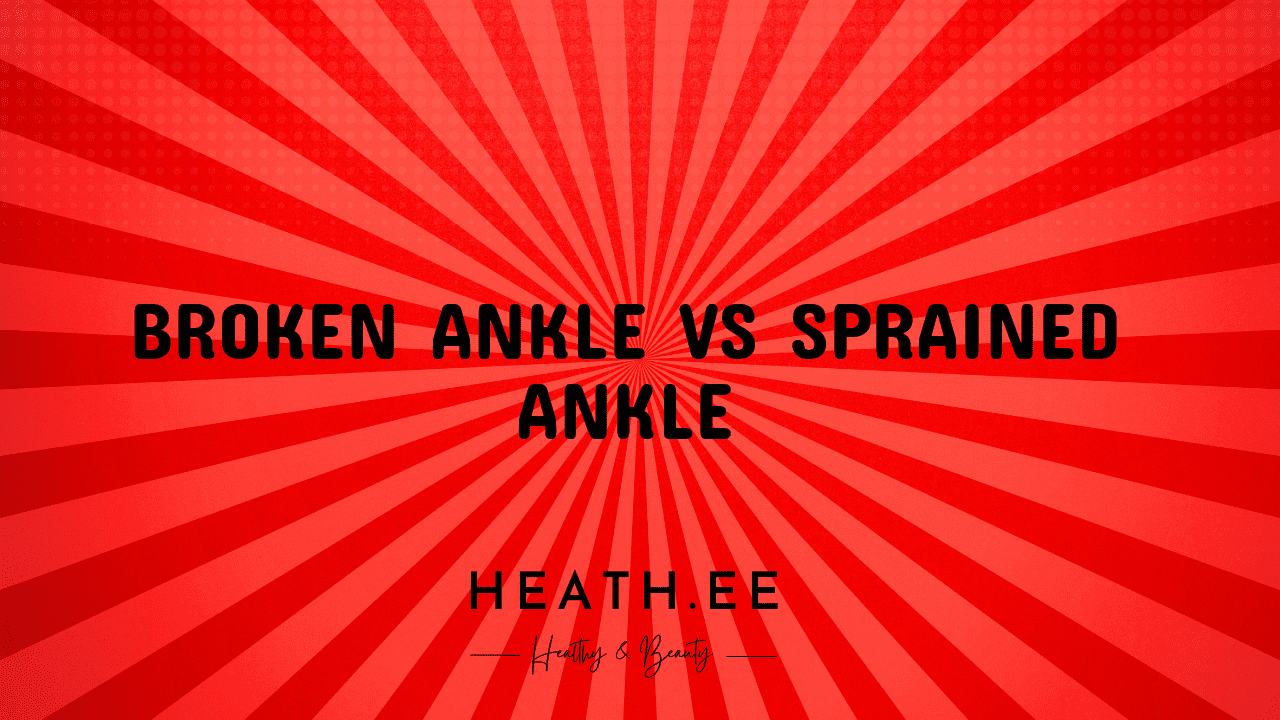When it comes to ankle injuries, it can be difficult to tell the difference between a broken ankle and a sprained ankle. Both injuries can be painful, and can have long-term effects if not treated properly. It is important to understand the differences between the two so that you can seek the right treatment and recovery plan for your injury. In this article, we will explore the differences between a broken ankle and a sprained ankle, and what you should do if you think you may have either.
What is a Broken Ankle?
A broken ankle, also known as a fractured ankle, is an injury to one or more of the bones in the ankle. This type of injury is usually caused by a fall or a twisting motion, and can range from a simple crack in the bone to a complete fracture. Symptoms of a broken ankle can include swelling, bruising, and pain. In some cases, the person may hear a popping sound when the injury occurs. It is important to seek medical attention right away if you think you have a broken ankle.

What is a Sprained Ankle?
A sprained ankle is an injury to the ligaments in the ankle. This type of injury is usually caused by a twisting motion, or when the foot is turned in an unnatural direction. Symptoms of a sprained ankle can include swelling, bruising, and pain. The person may also experience difficulty putting weight on the injured foot. It is important to seek medical attention right away if you think you have a sprained ankle.
Diagnosing a Broken Ankle vs Sprained Ankle
When diagnosing a broken ankle or sprained ankle, a doctor will usually do a physical exam to check for swelling, tenderness, and range of motion. X-rays may also be taken to check for fractures. In some cases, an MRI or CT scan may be used to get a better look at the injury.

Treating a Broken Ankle vs Sprained Ankle
The treatment for a broken ankle or sprained ankle will depend on the severity of the injury. In some cases, a person may be able to wear a splint or cast to help the bone heal. In more serious cases, surgery may be needed to repair the bone or ligaments. Physical therapy may also be recommended to help the person regain strength and range of motion in the ankle.
Recovery Time for a Broken Ankle vs Sprained Ankle
The recovery time for a broken ankle or sprained ankle will depend on the severity of the injury. In some cases, a person may be able to return to normal activities within a few weeks. In more serious cases, it may take several months for the person to fully recover.
Risks of a Broken Ankle vs Sprained Ankle
If a broken ankle or sprained ankle is not treated properly, it can lead to long-term problems. For example, a person may have difficulty walking or running, or may experience chronic pain or stiffness in the ankle. It is important to follow your doctor’s instructions to ensure that the injury heals properly.
Prevention of Broken Ankle vs Sprained Ankle
The best way to prevent a broken ankle or sprained ankle is to wear proper footwear and to practice good balance and body mechanics. It is also important to warm up before exercising or playing sports, and to be aware of your surroundings to avoid falls.
When to See a Doctor
If you think you have a broken ankle or sprained ankle, it is important to seek medical attention right away. Your doctor can diagnose the injury and provide you with the best treatment plan for your recovery.
Broken ankles and sprained ankles can be painful and debilitating injuries. It is important to understand the differences between the two so that you can seek the right treatment and recovery plan for your injury. If you think you may have a broken ankle or sprained ankle, it is important to seek medical attention right away. With the right treatment and recovery plan, you can get back to your normal activities as soon as possible.



